More than a hundred historically significant cities scattered across the globe are listed as UNESCO World Heritage Sites.
One of them is the gem of Cyprus - ancient Paphos. Here, resort romance, developed infrastructure, and rich architectural heritage are harmoniously combined. The region is of interest to both professional researchers and ordinary enthusiasts of antiquity. In this blog, we invite you to take a virtual tour of several notable sites.
Paphos Medieval Castle
The castle is located in the Kato Paphos area on the western side of the city's harbor. In the early 7th century, a Byzantine fort was built here, which was destroyed by a powerful earthquake in 1222. Soon after, the Lusignans built a new defensive structure made of limestone blocks on the same site, consisting of two towers connected by a wall.
As a reference, the Lusignans were a prominent French-origin noble family that ruled several European principalities, including Cyprus.
At the beginning of the Cyprus-Genoese War, the castle was besieged by the Genoese, whose attacks were successfully repelled by defenders for a whole year. In 1570, it was completely dismantled by the Venetians to prevent it from falling into the hands of advancing Ottoman conquerors. After the Ottoman rule was established on the island, the Turks reconstructed the fortress. The ground floor of the structure was a hall with stone vaults, and the rooms on both sides were used as prison cells. During the British protectorate, it served as a salt warehouse. In 1935, Paphos Castle was declared an ancient monument and has since become one of the city's main attractions. Today, it hosts the Aphrodite Festival and an annual September opera singers' competition.
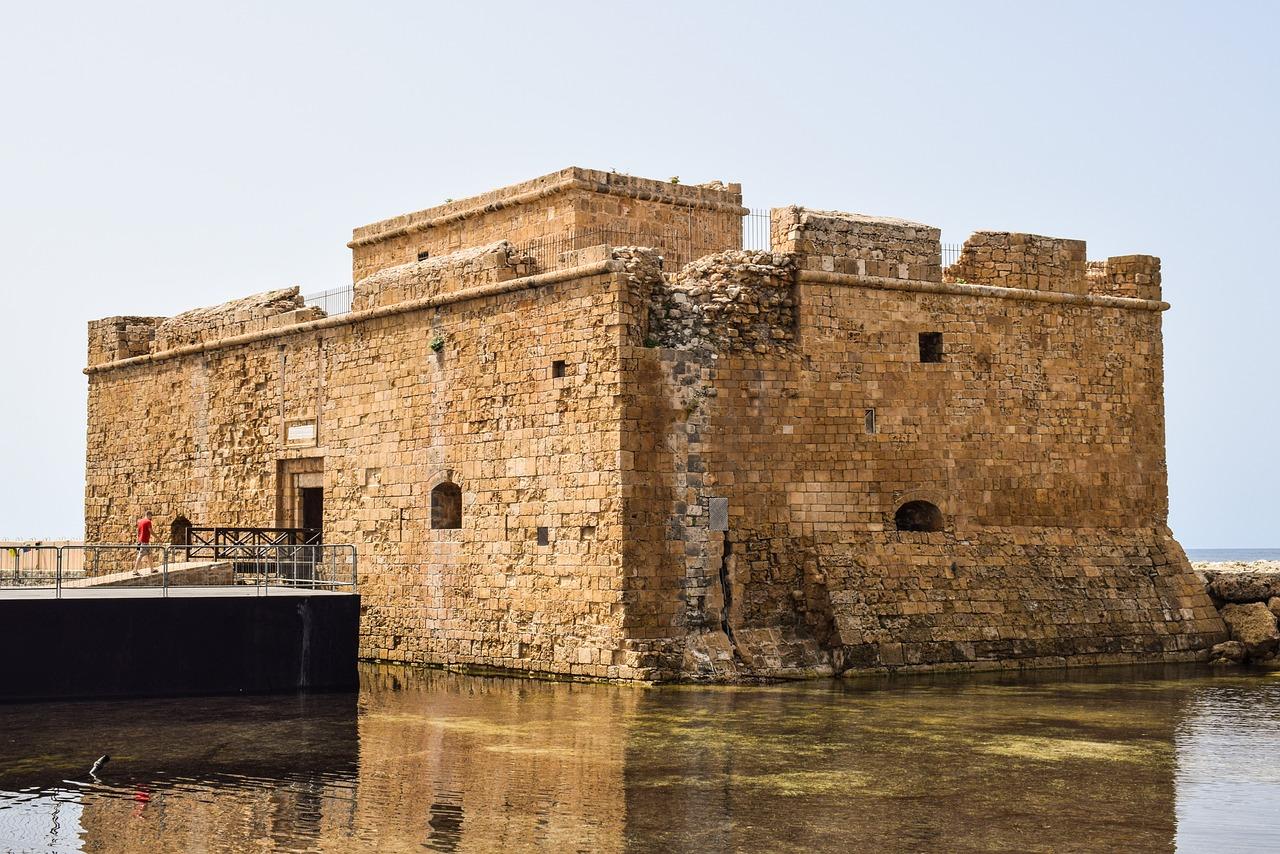
Agia Kyriaki Chrysopolitissa Church
In the 6th century, the largest Byzantine basilica, Chrysopolitissa, was built in what is now the historic center of Paphos. It was destroyed by Arab warriors a century later and underwent several reconstructions over time. The current incarnation of the basilica is the Agia Kyriaki Church, constructed in 1500 under the auspices of the Catholic Bishopric of Paphos.
Inside the building, there are three naves (a nave is an elongated room bounded by a series of columns) and an octagonal architectural lantern in the center. On the premises, you can see remnants of Corinthian marble columns that once formed colonnades and fragments of artistic mosaic flooring. A few steps away stands the historically significant Pillar of Saint Paul, where, according to tradition, the Christian missionary was beaten and tied by the besieging Roman inhabitants of the island.
In the late 19th century, a bell tower was added to the church. Although the Ottoman Turks, who had captured Cyprus, initially handed over the church to the Cypriot Orthodox Church, in 1987, after 400 years, it was returned to the Catholic parish by the Metropolitan Bishop of Paphos, Chrysostomos. Since then, Anglican and Lutheran services have been held here. On special occasions, such as the Feast of the Apostles Peter and Paul, Orthodox services also take place. The church is one of the centers of Christian pilgrimage and a significant religious monument in Cyprus.
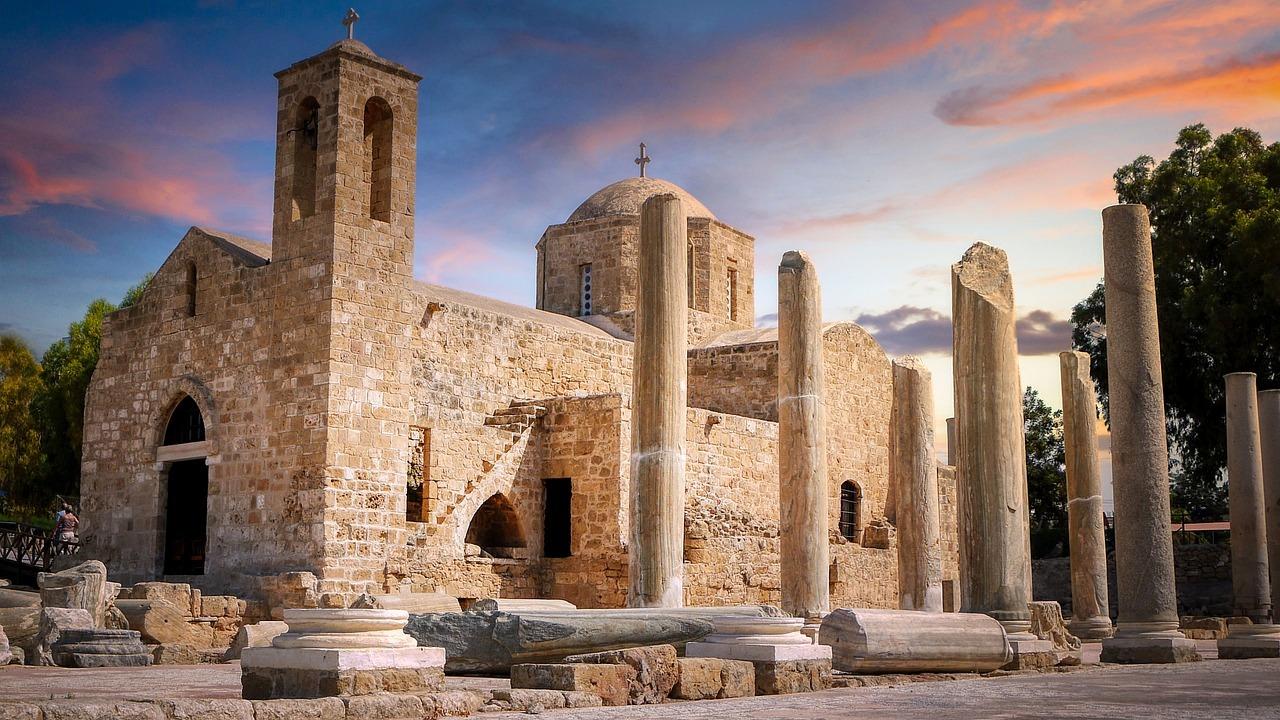
Ancient Odeon
The theater is located in an archaeological park, approximately 2 km from the harbor of Paphos. Its construction began in the Hellenistic era (ancestors of modern Greeks), and it was built using well-cut limestone blocks. In the 3rd century AD, the theater was completed by the Romans and served as a primary venue for mass performances and entertainment. During the Ancient Roman period, no urban settlement could exist without an amphitheater, which was constructed on a grand scale without budget constraints. In this way, rulers sought to earn the favor of the crowds and fulfill the desire for "bread and circuses."
The structure suffered significantly as a result of a massive earthquake in the 4th century. The stage, with a diameter of 11 meters, remained untouched, but of the originally constructed 25 rows, only 12 have survived to this day. Additionally, the theater was completely roofed until the natural disaster struck. To everyone's surprise, this extensive architectural monument was only discovered in 1973 when experts from the Cyprus Department of Antiquities began excavations in the area. Today, the ancient Odeon theater serves not only as a historical landmark but also plays a significant role in the cultural life of Paphos. At any time of the year, you can witness famous theatrical productions here, attracting audiences from the city's centuries-old rows of spectators and tourists from around the world.
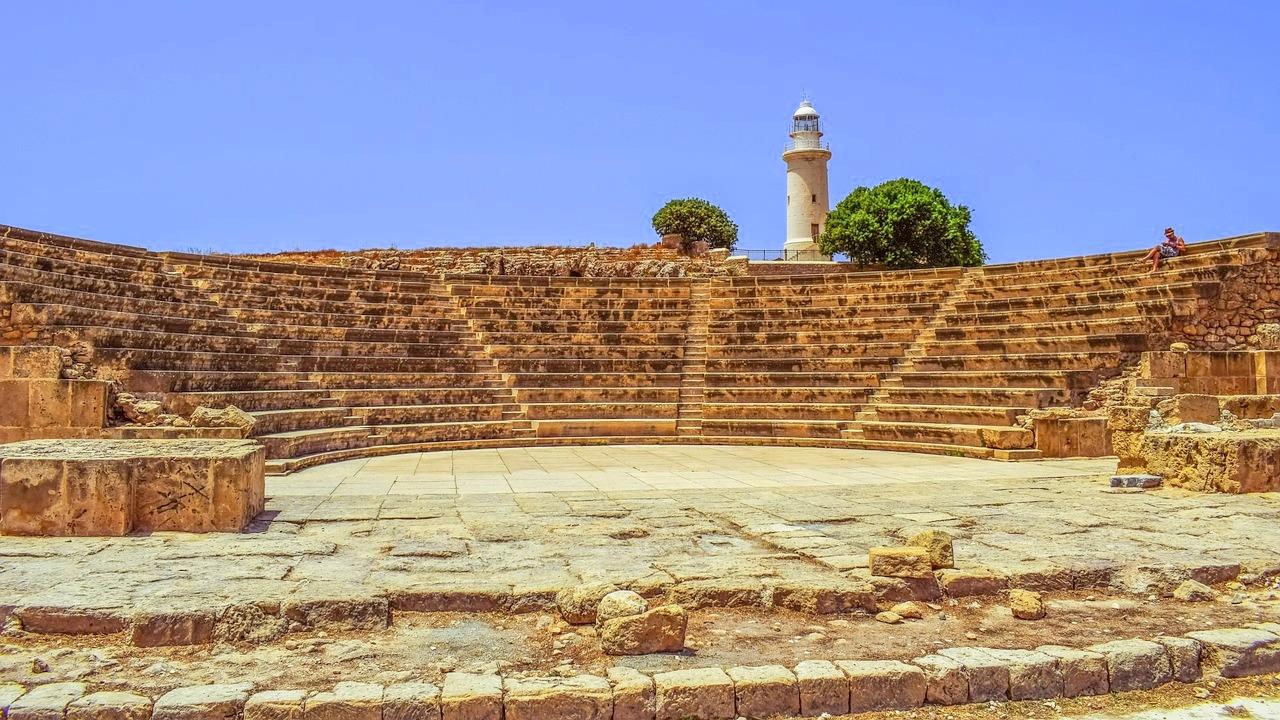
Saint Neophytos Monastery
The monastery is located a 20-minute drive from the center of Paphos and was founded by the monk Neophytos the Recluse in the 12th century. In brief, his biography can be summarized as follows. Neophytos was born in 1134 and, at the age of 18, became a novice at the Monastery of Saint John Chrysostom, near Nicosia. During extended journeys through Christian settlements and monasteries, the pilgrim strengthened his faith. In 1159, he returned to Cyprus and settled in a cave by a stream near Paphos. Six years later, Bishop Vasilios of Paphos invited Neophytos to become a priest and take disciples as assistants. He agreed four years later when his dwelling had transformed into a hermitage and later into a monastery following the hermitical canon. For over 60 years, the monk devoted himself to studying books and writing spiritual works. Neophytos passed away at the age of 90, leaving behind a multi-volume library.
In 1570, the monastery was plundered by the Turks, after which it went through difficult times until the mid-18th century when it began to flourish once again. The main attractions of the monastery include a collection of Byzantine icons and well-preserved frescoes from the 12th to 15th centuries. It is located at an altitude of about 500 meters, providing a panoramic view of Paphos against the backdrop of the sea. Today, the monastery, owned by the Cypriot Orthodox Church, remains active and an attractive place for pilgrims and tourists.
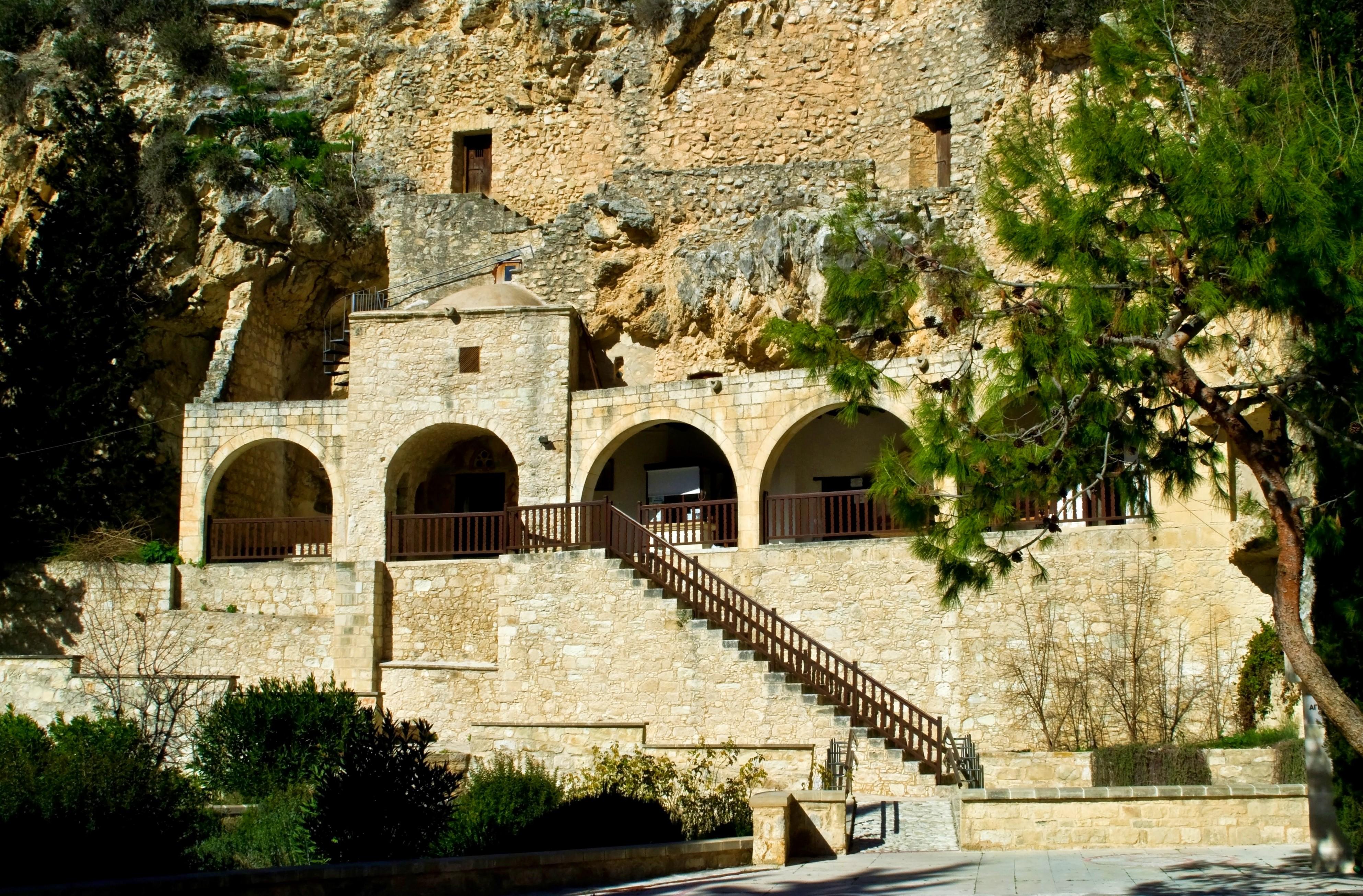
Church of Panagia Theoskepasti
This Orthodox Byzantine church is situated on a small rock near the Kato Paphos harbor. Thanks to the preserved icon of the Most Holy Theotokos (Mother of God) in a silver cover, traditionally believed to have been painted by the Apostle Luke himself, it received the alternate name "Church of the Protection of the Holy Virgin." The history of the church dates back to the 10th century when Cyprus was a part of the Byzantine Empire. During this period, a large number of religious buildings were constructed on the island. When the Turks invaded Cyprus, they plundered and burned everything around. However, the church remained untouched.
Legend has it that at that moment, God covered it with the dense crown of a nearby tree, estimated to be 700 years old. According to another historical version, a sudden fog descended upon the church, rendering it invisible. For your information, "Theoskepasti" translates from Greek as "God-covered."
Unfortunately, the earthquake of 1878 completely destroyed the building, and in 1923, a new one was erected on the same site, which can be seen today. In 1990, under the patronage of Metropolitan Chrysostom of Paphos, a large-scale reconstruction of the church began, which was completed 19 years later. The interior features a wooden carved iconostasis on which icons are displayed, with the most valuable one being described above. Currently, the church is one of the global centers of Christian pilgrimage.
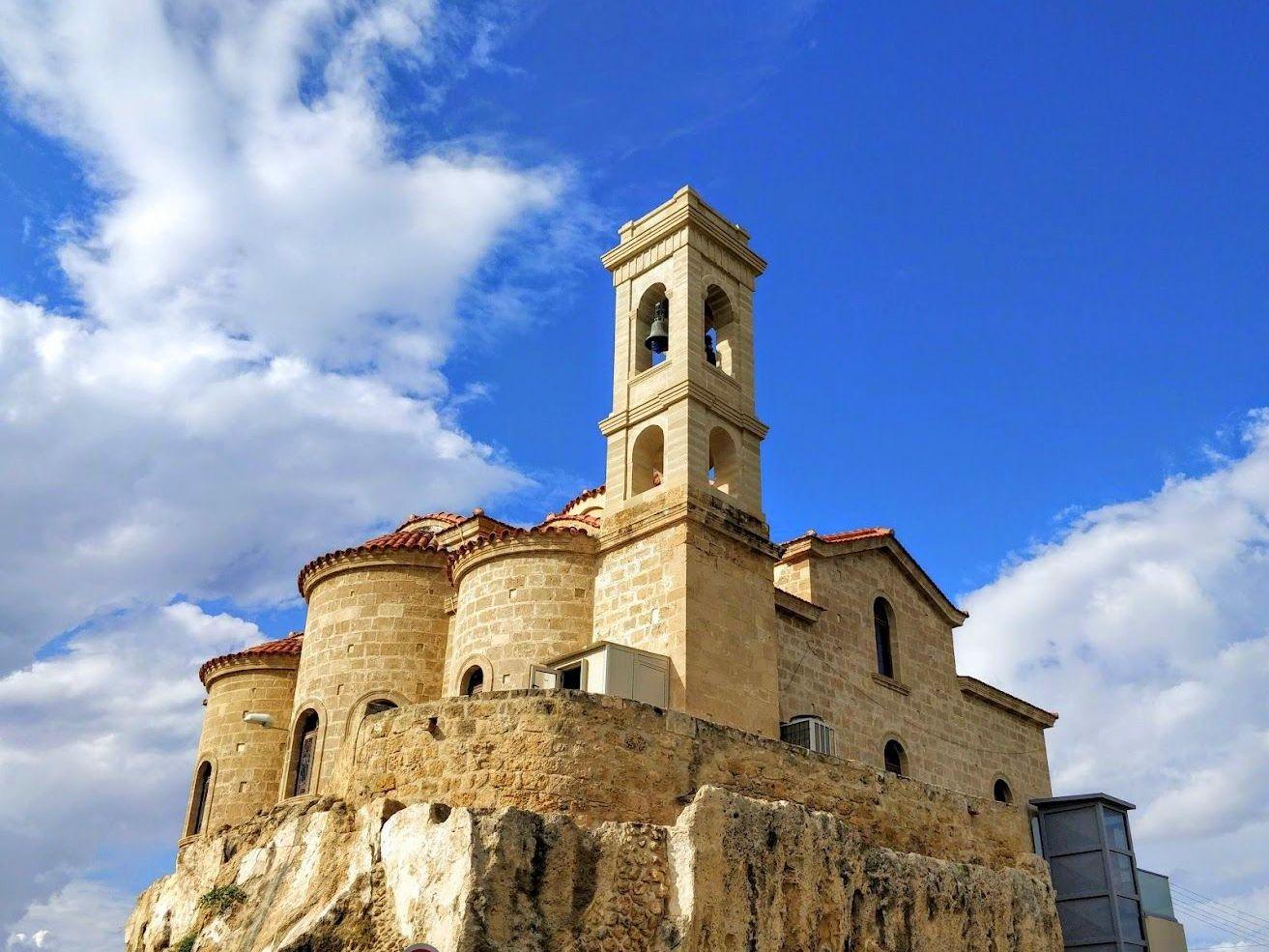
Tombs of the Kings
This historical site, representing a necropolis covering over 30 hectares, is located near the Paphos harbor. In reality, you won't find the tombs of kings or their family members here; the name comes from the majestic appearance of the rock-cut underground tombs. Starting from the 3rd century BC, the necropolis became the final resting place for local aristocrats and high-ranking city officials. The burial chambers resemble houses or small palaces with columned halls, some adorned with paintings, frescoes, and stone carvings. People believed that even after death, a person should be surrounded by the same environment as in life.
The tombs are interconnected by underground passages and form catacombs, which were used as shelters by early Christians during the Roman rule. Since ancient times, the unprotected necropolis fell victim to looting, always attracting "grave diggers," as they are called nowadays. Legal archaeological excavations here only began in 1977. To facilitate orientation in the area, a large detailed map is located at the entrance.
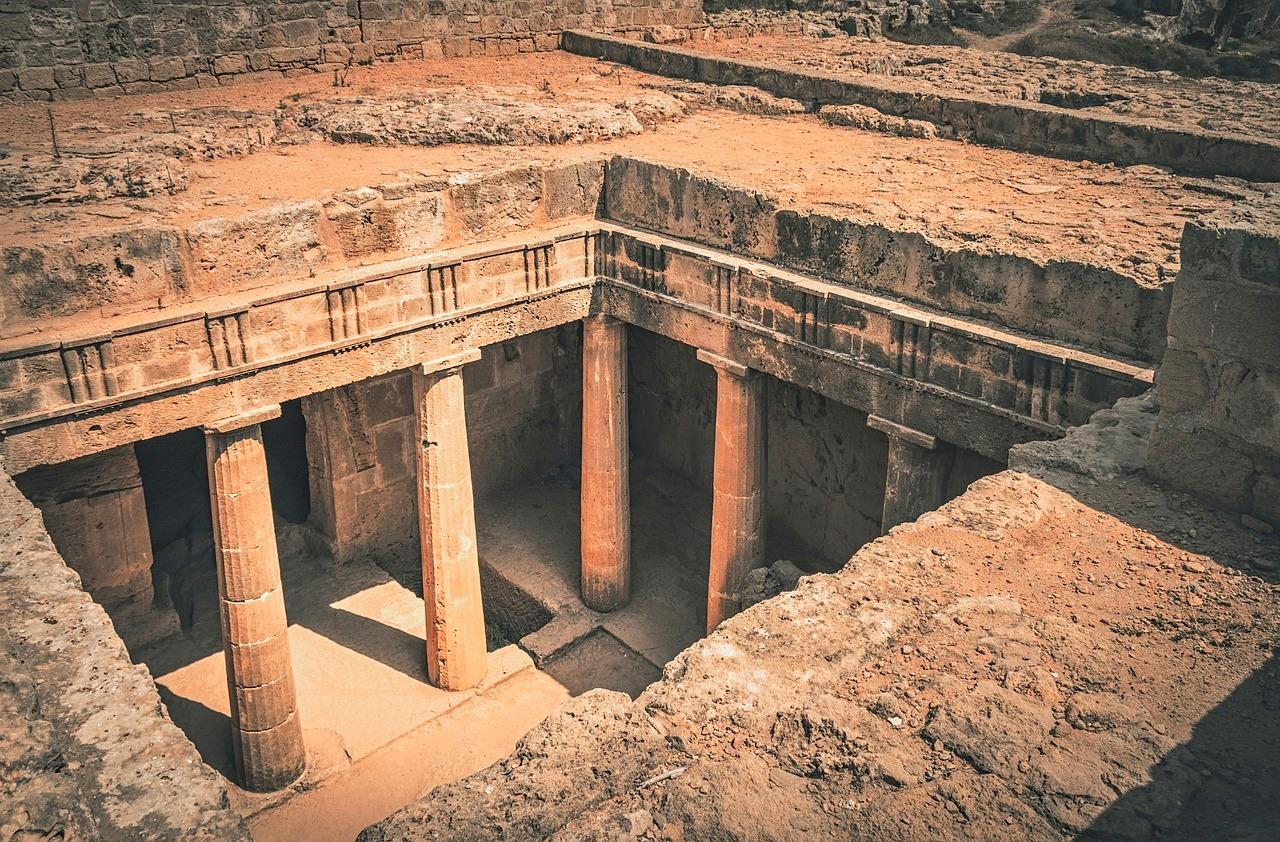
Church of St. Paraskevi
One of the oldest surviving churches of the Byzantine period is located in the village of Yeroskipou (translated as "holy garden"), three kilometers from Paphos. The church was founded between 833-844 AD on the site of an ancient structure, of which only column fragments remain. According to a credible historical version, the entire complex, most of which was built in the 11th century, stands on the ruins of an ancient temple dedicated to Aphrodite. In the mid-19th century, the church was consecrated in the name of St. Paraskevi, and several decades later, a bell tower and a narthex (entrance hall) were added. During the same period, the icon of the Virgin Mary Geronkipiotissa was "discovered," according to legend, by a local resident who found and presented it to the parish.
The structure has a unique architecture: five domes form the shape of a cross, and there is a baptismal font in the square chapel. The iconostasis dates back to the 16th century, and among the various icons, the miraculous icon of the Mother of God is placed. The church houses unique images, including a belt fresco in the central dome depicting the Most Holy Theotokos in the Oranta style, with raised hands in a prayerful gesture. The church belongs to the Paphos Metropolis of the Cypriot Orthodox Church and often hosts colorful wedding ceremonies on its premises.
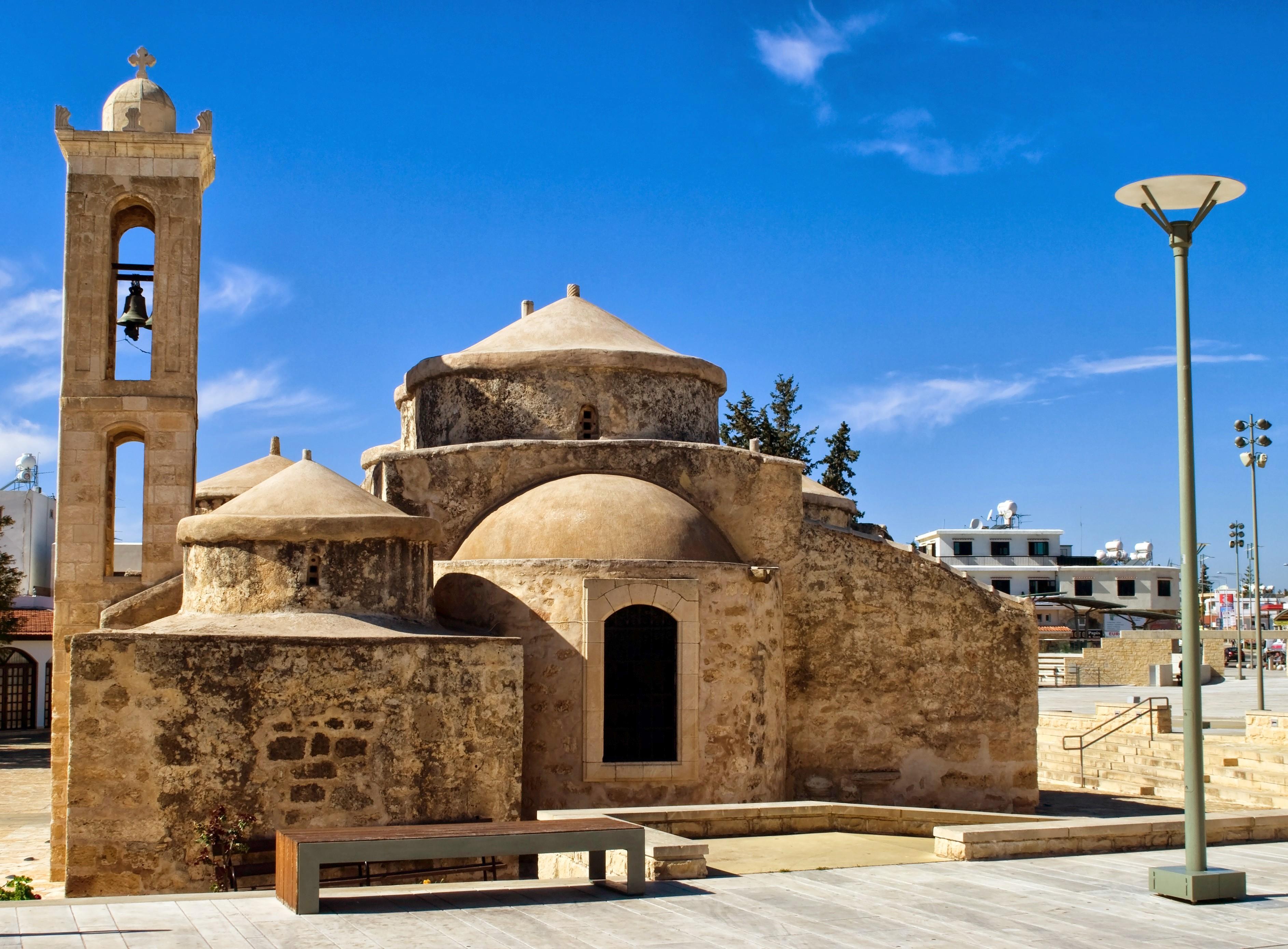
Ethnographic Museum
The museum is located 3 kilometers to the east of Paphos in the village of Yeroskipou. The building is a traditional 18th-century mansion known as the Hadji-Smith House. It belonged to Andreas Zimbulakis, a native of Cephalonia, who was a wealthy and educated man and the former British consul in western Cyprus, responsible for supplying British forces. In 1947, the Municipal Department of Antiquities acquired the mansion and established a museum in it, allowing visitors to immerse themselves in the history and learn about the art and culture of the western part of the island.
The exhibition features various types of natural textiles and the machines used for their production. The pottery hall houses numerous handmade vessels with detailed descriptions of their production. Separate rooms are dedicated to a blacksmith's workshop and a storage space for agricultural tools. Among the most unique exhibits are dried pumpkins, which were used as floats and helped children learn to swim. The museum promotes the cultural traditions of Cyprus and organizes informative thematic exhibitions. It's a pleasant place to spend time with the whole family, exploring the mansion and strolling in the well-maintained shaded garden.

Chrysoroyiatissa Monastery
One of the oldest monasteries in Cyprus is located 40 kilometers from Paphos amidst picturesque mountain forests of Troodos. The history of its foundation states that in 1152, a monk-hermit named Ignatius found an icon of the Holy Virgin Mary on the shores of the Mediterranean Sea. That night, the Mother of God appeared to him in a dream, asking him to build a monastery in the nearby mountains. Upon waking up, the monk began fulfilling the Holy Mother's request. During its development, the monastery served as a refuge for Orthodox believers who were persecuted during the rule of the Lusignan dynasty on the island. The latest buildings of the complex, located at an altitude of 700 meters above sea level, date back to 1770. There are several versions regarding the origin of the monastery's name. The word "Chrysoroyiatissa" is composite, with the first part translating as "gold." The second half can carry several semantic loads: the breasts of the Mother of God, the fruit of the pomegranate tree, or the name of the mountain "Roy."
Currently, the monastery is not active, and only a caretaker resides there, which is why it is often referred to as the "monastery of a single monk." The buildings house a museum with a collection of sacred books and icons. Additionally, the monastery is known for its wines. It is believed that small doses of the wine produced at the monastery can cure many ailments.
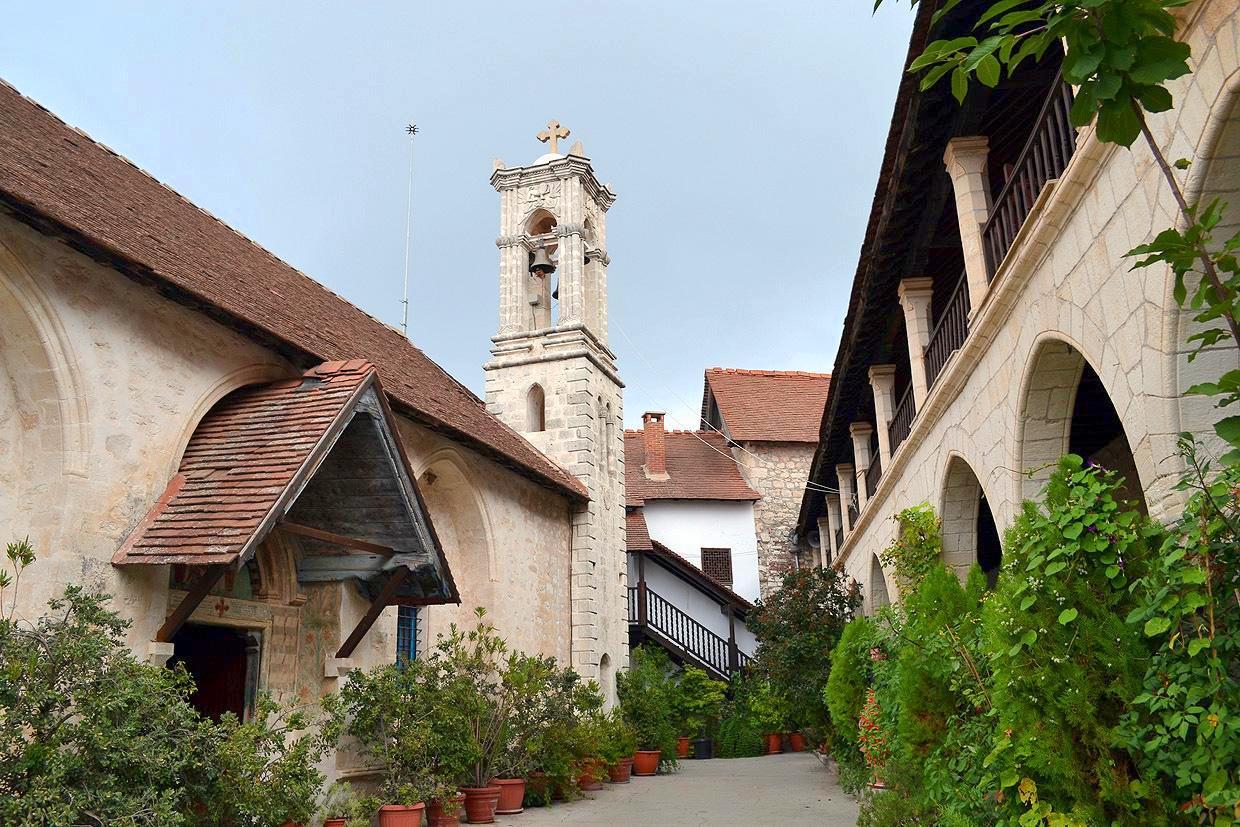
Paphos Lighthouse
This is the most popular lighthouse out of the five existing ones in Cyprus, thanks to its favorable location in the area of the Archaeological Park of the city. The structure was built in 1888 during the British rule of the island and served as a navigational landmark for ships entering the port of Paphos. The height of the building itself is 20 meters, and the lantern shines from an elevation of 36 meters above sea level. Throughout its history, the lighthouse was operated by a keeper living nearby. However, after modernization, it was completely replaced by an automated system emitting a white light signal every 15 seconds. The range of the beam is 17 nautical miles (one mile equals 1.852 kilometers), and it is powered by solar panels.
Today, the lighthouse not only serves as a navigational aid but also functions as a cultural site. At the initiative of the republic's authorities, in 2017, the Paphos Maritime and Cyprus Maritime History Museum opened here. Inside, there is a permanent exhibition called "Cyprus, the Sea, and Lighthouses: A History Through Time." Speaking at the museum's opening, the then-Minister of Maritime Transport noted that the Kato Paphos Lighthouse is a symbol of Cyprus as a center of Mediterranean shipping.
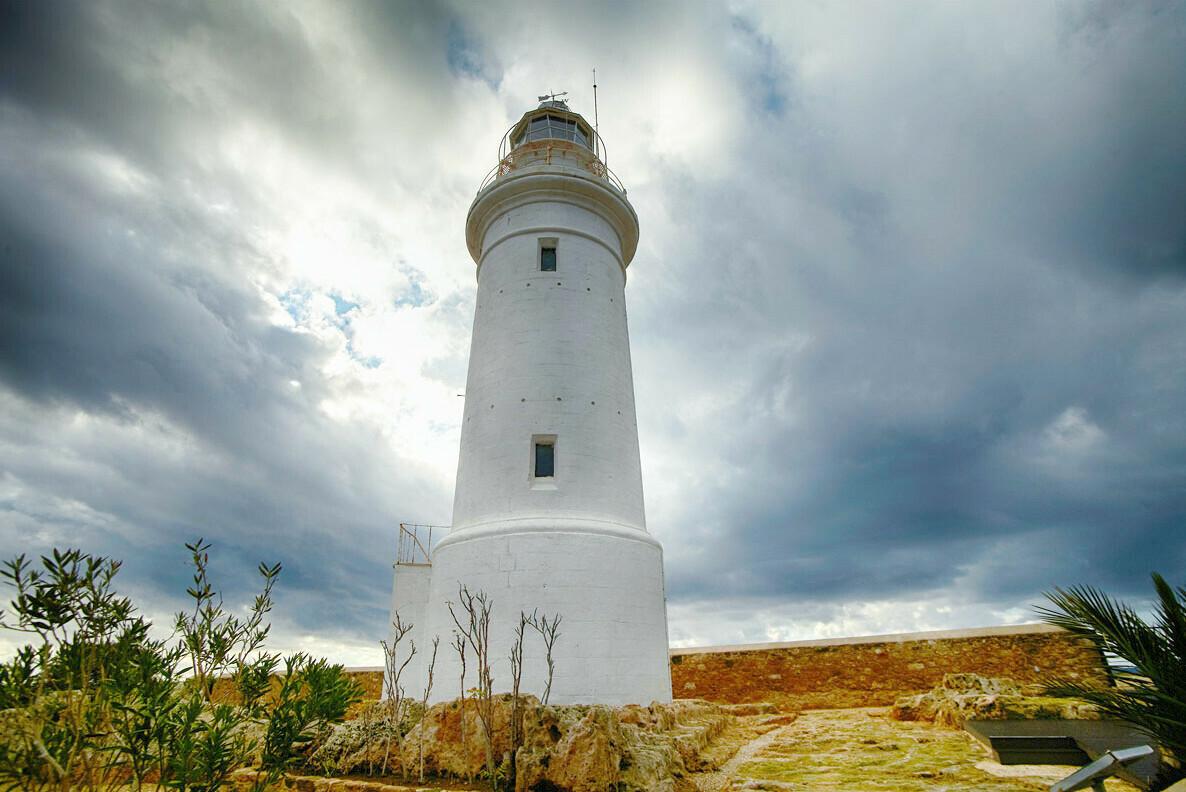
Read also:

